
Pyay: An Ancient Gem by the Irrawaddy River
Explore Pyay in Myanmar: A historical gem by the Irrawaddy River with ancient pagodas, scenic landscapes, and rich cultural heritage.
Pyay, also known as Prome, is a serene city nestled along the banks of the Irrawaddy River in Myanmar. This charming destination is a blend of historical wonders and natural beauty, making it a perfect spot for travelers looking to explore off the beaten path. The city is steeped in rich history, dating back to the Pyu civilization, and is adorned with ancient pagodas, colonial-era buildings, and vibrant local markets. One of the highlights of Pyay is the majestic Shwesandaw Pagoda, which offers stunning views of the city and the river below. This golden pagoda is not only a spiritual haven but also a testament to the city's enduring heritage. Nearby, the Pyu Ancient Cities, a UNESCO World Heritage site, provides a fascinating glimpse into ancient Myanmar, with well-preserved ruins and artifacts that tell the story of this once-thriving civilization. Nature enthusiasts will appreciate the lush landscapes surrounding Pyay. The scenic countryside is perfect for leisurely walks, cycling, or boat rides along the river. The city's proximity to the Irrawaddy River means visitors can enjoy picturesque sunsets and tranquil boat trips, offering a unique perspective of the local way of life. Pyay's warm and welcoming locals add to its charm, making every visit a memorable experience.
Local tips in Pyay
- Visit Shwesandaw Pagoda during sunset for breathtaking views of the city and river.
- Explore the Pyu Ancient Cities early in the morning to avoid the heat and crowds.
- Take a boat trip on the Irrawaddy River to experience the serene beauty of the region.
- Try local delicacies at the bustling Pyay Market for an authentic taste of Myanmar cuisine.
- Rent a bicycle to explore the scenic countryside and small villages around Pyay.
Pyay: An Ancient Gem by the Irrawaddy River
Pyay, also known as Prome, is a serene city nestled along the banks of the Irrawaddy River in Myanmar. This charming destination is a blend of historical wonders and natural beauty, making it a perfect spot for travelers looking to explore off the beaten path. The city is steeped in rich history, dating back to the Pyu civilization, and is adorned with ancient pagodas, colonial-era buildings, and vibrant local markets. One of the highlights of Pyay is the majestic Shwesandaw Pagoda, which offers stunning views of the city and the river below. This golden pagoda is not only a spiritual haven but also a testament to the city's enduring heritage. Nearby, the Pyu Ancient Cities, a UNESCO World Heritage site, provides a fascinating glimpse into ancient Myanmar, with well-preserved ruins and artifacts that tell the story of this once-thriving civilization. Nature enthusiasts will appreciate the lush landscapes surrounding Pyay. The scenic countryside is perfect for leisurely walks, cycling, or boat rides along the river. The city's proximity to the Irrawaddy River means visitors can enjoy picturesque sunsets and tranquil boat trips, offering a unique perspective of the local way of life. Pyay's warm and welcoming locals add to its charm, making every visit a memorable experience.
When is the best time to go to Pyay?
Iconic landmarks you can’t miss
Uppatasanti Pagoda
Explore the serene beauty of Uppatasanti Pagoda in Naypyidaw, a stunning Buddhist temple reflecting Myanmar's rich cultural heritage.

Shwesandaw Pagoda
Experience the serenity and architectural beauty of Shwesandaw Pagoda, a cultural gem in Pyay, Myanmar, offering stunning views and spiritual tranquility.

Naypyitaw Water Fountain Park
Discover the enchanting Naypyitaw Water Fountain Park, a stunning blend of art and nature in Myanmar's capital, perfect for relaxation and memorable experiences.
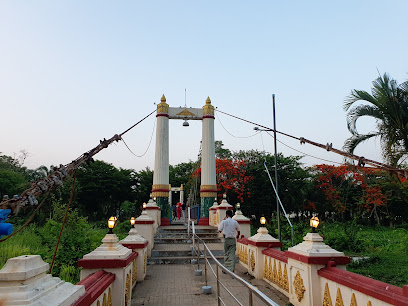
Swe Taw Myat Pagoda
Explore the enchanting Swe Taw Myat Pagoda in Yangon, a stunning Buddhist temple rich in history and spiritual significance, perfect for all travelers.

Man Shwe Set Taw Buddhist Temple
Discover the serenity of Man Shwe Set Taw Buddhist Temple in Myanmar, a peaceful retreat steeped in rich culture and spiritual heritage.

Phaya Gyi Stupa
Discover the breathtaking Phaya Gyi Stupa in Pyay, Myanmar—a stunning Buddhist temple that embodies tranquility and cultural heritage.

Mingalar Garden Hotel
Discover tranquility at Mingalar Garden Hotel in Pyay, where comfort meets nature in a serene atmosphere perfect for relaxation.

Lucky Dragon Hotel
Explore Pyay's rich culture while enjoying modern comfort at Lucky Dragon Hotel, your perfect base for an unforgettable journey.

Shwe Yan Pyay
Discover the serene beauty and rich spiritual heritage of Shwe Yan Pyay, a captivating monastery in Nyaungshwe, Myanmar.

Shwebontharmuni Pagoda
Explore the breathtaking Shwebontharmuni Pagoda in Pyay, a sanctuary of peace and architectural beauty reflecting Myanmar's rich Buddhist traditions.
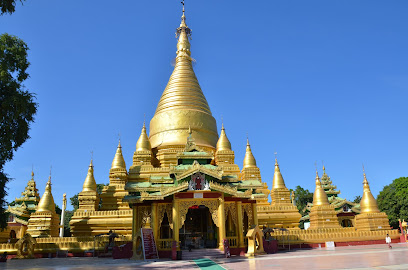
Prome Garden Hotel and Restaurant Pyay
Discover tranquility and local flavors at Prome Garden Hotel and Restaurant, your serene escape in Pyay, Myanmar.

Bawbawgyi Stupa
Explore the historical and spiritual beauty of Bawbawgyi Stupa in Pyay, Myanmar, a must-visit destination for every traveler seeking cultural immersion.
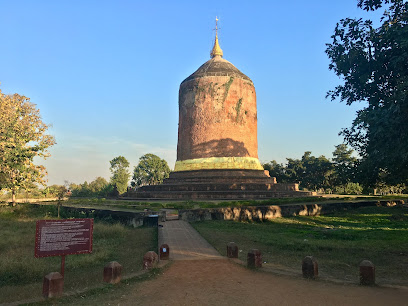
Shwe Nat Taung Pagoda
Discover the spiritual essence and breathtaking beauty of Shwe Nat Taung Pagoda in Shwedaung, Myanmar—a must-visit for every traveler.
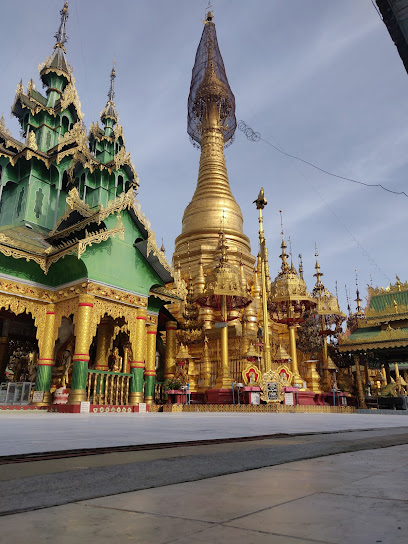
Thone Pan Hla
Explore the historic Thone Pan Hla temple in Pyay, where architectural beauty meets cultural significance in a tranquil setting.

Tharay Khit Taya, One Of Historical City Of Myanmar
Experience the enchanting history of Tharay Khit Taya, a captivating tourist attraction in the heart of Myanmar's rich cultural landscape.
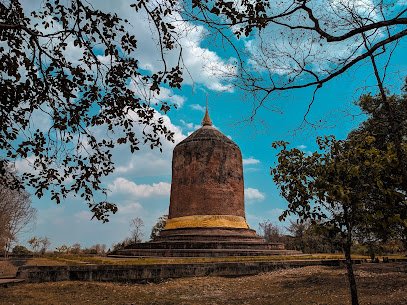
Unmissable attractions to see
ပြည်သူ့ဥယျာဉ်
Discover tranquility in the heart of Yangon at this beautiful park, where lush greenery and vibrant culture intertwine.

Shwemawdaw Pagoda
Explore Shwemawdaw Pagoda, a breathtaking Buddhist temple in Bago, Myanmar, known for its stunning architecture and rich spiritual heritage.

Uppatasanti Pagoda
Explore the stunning Uppatasanti Pagoda in Naypyidaw, a serene Buddhist landmark embodying peace and rich cultural heritage.

Shwesandaw Pagoda
Discover the spiritual and cultural essence of Myanmar at Shwesandaw Pagoda in Pyay, a breathtaking site of worship and history.

Sein Gay Har China Town
Explore the vibrant Sein Gay Har China Town in Yangon, filled with local delicacies, unique crafts, and an authentic cultural experience.
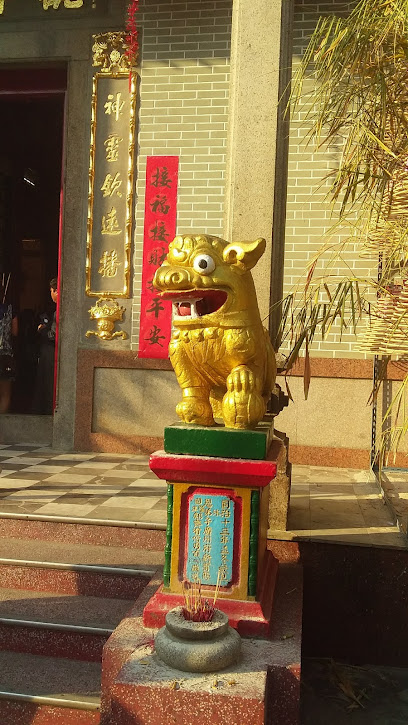
Naypyitaw Water Fountain Park
Discover the enchanting Naypyitaw Water Fountain Park, a serene oasis featuring stunning water displays and lush landscapes in Myanmar's capital.

Ngapali Beach
Experience the unspoiled beauty of Ngapali Beach, Myanmar's hidden gem with pristine sands and clear waters, perfect for relaxation and adventure.

Happy World Amusement Park
Immerse yourself in the joy and excitement at Happy World Amusement Park, a premier tourist attraction in Yangon, Myanmar.
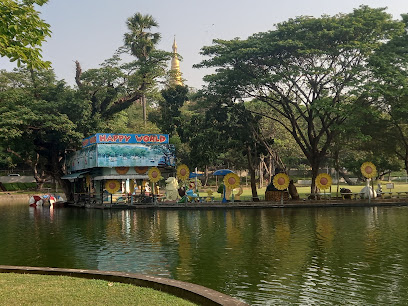
Chaung Thar Beach
Experience the breathtaking beauty of Chaung Thar Beach with its golden sands, crystal-clear waters, and vibrant local culture, perfect for all travelers.

Man Shwe Set Taw Buddhist Temple
Discover the serene beauty and rich heritage of Man Shwe Set Taw Buddhist Temple, a must-visit spiritual landmark in Myanmar.

Mae La Mu Pagoda.
Explore the tranquility and architectural beauty of Mae La Mu Pagoda, a gem in Yangon that embodies Myanmar's rich cultural heritage.

Shwe San Daw Pagoda
Discover the serene beauty and cultural richness of Shwe San Daw Pagoda, a must-visit Buddhist landmark in Twantay, Myanmar.

National Herbal Park
Explore the serene beauty of National Herbal Park in Naypyidaw, Myanmar, and discover the wonders of herbal plants and nature.

Phaya Gyi Stupa
Discover the tranquil beauty of Phaya Gyi Stupa, a magnificent Buddhist temple that offers serenity and cultural richness in Pyay, Myanmar.

Shwebontharmuni Pagoda
Discover the spiritual essence of Myanmar at Shwebontharmuni Pagoda in Pyay, where stunning architecture meets tranquil meditation.

Essential places to dine
Wish River View Restaurant
Savor delicious local cuisine with stunning riverside views at Wish River View Restaurant in Pyay.
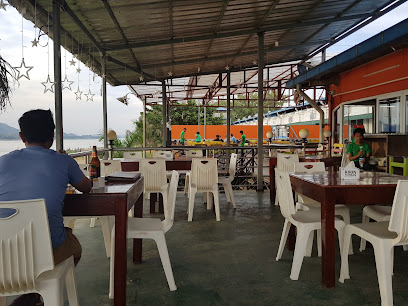
Lotteria - Pyay
Experience the best of fast food at Lotteria - Pyay with delicious local flavors and quick service in a vibrant atmosphere.
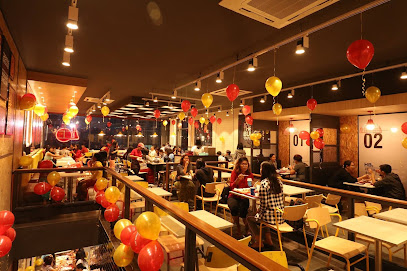
Shwe Pyay Kyat Thout San (Original)
Experience authentic Burmese cuisine at Shwe Pyay Kyat Thout San in Pyay - home of famous chicken soup curry and warm hospitality.

Myint Myint Aye Pyay Rice Salad
Experience authentic Burmese cuisine at Myint Myint Aye Pyay Rice Salad in Pyay - where flavor meets tradition.

Daw U Pyay Rice Salad
Savor authentic Myanmar flavors at Daw U Pyay Rice Salad in Pyay – a culinary journey through traditional rice salads and delightful dishes.

May Ywet War Restaurant
Experience the vibrant flavors of traditional Burmese cuisine at May Ywet War Restaurant in Pyay.

အိဖူး မြန်မာထမင်းဆိုင်
Savor authentic Burmese cuisine at အိဖူး မြန်မာထမင်းဆိုင် in Pyay – where every dish tells a story.

Eat Hotpot,Bbq & Cafe
Discover the joy of communal dining at Eat Hotpot, BBQ & Cafe in Pyay—where every meal is an adventure bursting with flavor.

Prome Garden Restaurant
Discover culinary delights amidst serene gardens at Prome Garden Restaurant in Pyay—an unforgettable dining experience awaits.

ဆုံနေကျ စားသောက်ဆိုင်
Savor authentic Burmese cuisine in Pyay's cozy dining gem – a culinary journey awaits at ဆုံနေကျ စားသောက်ဆိုင်.

Easy Bar & Grill
Experience authentic Burmese cuisine at Easy Bar & Grill in Pyay - where flavor meets hospitality in a charming setting.

Sweet Dream restaurant
Experience authentic Burmese flavors at Sweet Dream Restaurant in Pyay – where every meal is a celebration of local cuisine.

Wish BBQ & Restaurant
Discover authentic Burmese barbecue at Wish BBQ & Restaurant in Pyay - a true taste of local flavors awaits every visitor.

ရွှေဝါးအိမ် မြန်မာထမင်းဆိုင်
Savor authentic Burmese cuisine at Golden Bamboo House in Pyay, where tradition meets flavor in every dish.

ဆုံမှတ်
Experience authentic Myanmar cuisine at ဆုံမှတ် in Pyay - a delightful restaurant offering rich flavors and warm hospitality.

Markets, malls and hidden boutiques
ဒေါ်လာဆီစက်
Explore local flavors and essentials at Dollar Oil Store in Pyay, where friendly service meets a delightful grocery experience.

HOME SWEET HOME
Explore 'Home Sweet Home' in Pyay for quality home goods and unique local finds that enhance your living experience.

Kyi Nyunt II Store
Experience the vibrant shopping culture of Pyay at Kyi Nyunt II Store, offering a unique array of local and international treasures.

Pyae Hlyan Supermart
Explore Pyae Hlyan Supermart for a diverse selection of local goods, fresh produce, and unique souvenirs in a vibrant shopping atmosphere.

ပုလဲမြင့်မိုရ် ရွှေဆိုင်
Discover exquisite handcrafted jewelry at ပုလဲမြင့်မိုရ် ရွှေဆိုင် in Pyay, a treasure trove of Myanmar's rich heritage and artistry.

ပြည်မြန်မာဆေးရုံ
Discover unique local crafts and authentic Burmese culture at Pyay's vibrant store, a must-visit for tourists seeking memorable souvenirs.

Wagyi store
Explore the vibrant local culture at Wagyi Store in Pyay, where unique handicrafts and traditional goods await every curious traveler.

ဂုဏ်မြတ်ရှင် သင်္ကန်းတိုက်
Explore the rich cultural heritage of Myanmar through unique clothing and accessories at ဂုဏ်မြတ်ရှင် သင်္ကန်းတိုက် in Pyay.

စည္းဇိမ္ စတိုးႏွင့္ ဆိုင္ကယ္ ေရာင္းဝယ္ေရး
Discover scooters and local treasures in Pyay's lively store, where vibrant culture meets exceptional shopping experiences.

ရွက်သစ်ဝေ Mini Mart
Experience local culture and convenience at ရွက်သစ်ဝေ Mini Mart, your go-to smart shop in the heart of Bago.

ပရိဘောဂစတိုး
Explore the essence of Myanmar at ပရိဘောဂစတိုး in Pyay, where unique local products meet warm hospitality.

ချစ်မျက်ဝန်းစတိုး
Explore authentic Burmese handicrafts and local treasures at Chit Myat Wun Store, a must-visit destination in Pyay for every traveler.

ဦးမျိုးအောင်(ကုန်စုံဆိုင်)
Explore the vibrant U Myo Aung Store in Pyay for unique local goods and authentic Myanmar souvenirs.

ကံမ ကုန်စုံဆိုင်
Explore the vibrant local culture and unique offerings at ကံမ ကုန်စုံဆိုင် in Pyay, Myanmar. A must-visit for authentic souvenirs and local delicacies.

Shwe Pyar
Explore the essence of Myanmar at Shwe Pyar, the charming store in Pyay offering unique crafts and souvenirs.

Essential bars & hidden hideouts
Royal Star
Experience the vibrant nightlife of Pyay at Royal Star, where every night is a celebration of music, laughter, and unforgettable moments.

FAMILY Swimming Pool , Restaurant & Rooftop Bar
Experience family fun and relaxation at the FAMILY Swimming Pool, Restaurant & Rooftop Bar in Pyay—where dining, swimming, and stunning views come together.

Y2 Family Ktv
Experience the joy of singing at Y2 Family Ktv, Pyay's premier karaoke bar offering fun for all ages with a vast song selection and vibrant atmosphere.

RUBY Restaurant & KTV
Discover the lively blend of dining and karaoke at RUBY Restaurant & KTV in Pyay, a must-visit for a memorable night out.

Kiss Me Quick KTV
Experience the vibrant nightlife of Pyay at Kiss Me Quick KTV - a karaoke haven with private rooms, delicious drinks, and endless fun.

Winner KTV & Restaurant
Experience the vibrant nightlife of Pyay at Winner KTV & Restaurant, where delicious food meets karaoke fun for an unforgettable evening.

Spider
Experience the ultimate karaoke night at Spider in Pyay, where every song brings you closer to unforgettable memories.

Venus KTV
Discover the vibrant nightlife of Pyay at Venus KTV, where you can sing your favorite songs and enjoy a fun-filled evening with friends.

EVER SMILE ( KTV)
Experience the vibrant nightlife of Pyay at Ever Smile KTV, where unforgettable karaoke moments and local culture meet.

Ko kyaw g
Discover the vibrant nightlife at Ko Kyaw G Bar in Pyay, where culture meets relaxation and every sip tells a story.

သုံးရာသီ ထန်းရည်ဆိုင် (ပြည်)
Discover the vibrant atmosphere of သုံးရာသီ ထန်းရည်ဆိုင်, your ultimate bar experience in the heart of Pyay, Myanmar.

သိုက်ဖွား Thike Fhwar Liquar House
Discover the vibrant nightlife at Thike Fhwar Liquar House, a premier bar in Pyay, Myanmar, serving refreshing drinks and local warmth.

R6CJ+2FP Pyay
Experience the vibrant nightlife of Pyay at the best karaoke bar, where locals and tourists unite in song and celebration.

Queen KTV
Experience the vibrant nightlife at Queen KTV in Pyay, the ultimate karaoke and bar destination for tourists and locals alike.

Joker Entertainment
Immerse yourself in the lively karaoke culture of Pyay at Joker Entertainment, where music and fun come together in a friendly atmosphere.

Local Phrases
-
- Helloမင်္ဂလာပါ
[mingala ba] - Goodbyeသွားပါ
[swarr ba] - Yesဟုတ်သည်
[hote ne] - Noမဟုတ်ဘူး
[ma hote bu] - Please/You're welcomeကျေးဇူးတင်ပါတယ်
[chay zu tin ba de] - Thank youကျေးဇူးတင်ပါတယ်
[chay zu tin ba de] - Excuse me/Sorryခဏလို့
[khan loe] - How are you?ဘယ်ဘက်လဲ
[be ba le] - Fine. And you?ကျေးဇူးတင်ပါတယ်။ မင်းလဲ
[chay zu tin ba de. mingal le] - Do you speak English?အင်္ဂလိပ်မက်ဆိုးလဲ
[ingelein ma hket loe] - I don't understandမဟုတ်ဘူးသေးပါ
[ma hote bu se ba]
- Helloမင်္ဂလာပါ
-
- I'd like to see the menu, pleaseမီနူလင်နဲ့ကိုယ်တို့ပါပဲ
[menu lang ne koatote ba ba] - I don't eat meatသာသနာမဟုတ်ဘူး
[sa thana ma hote bu] - Cheers!အင်္ဂလိပ်စိန်း
[ingelein sein] - I would like to pay, pleaseငွေငွေချေးပါတယ်
[ngwe ngwe chay ba de]
- I'd like to see the menu, pleaseမီနူလင်နဲ့ကိုယ်တို့ပါပဲ
-
- Help!ကျက်လုပ်ပါ
[kyat loat ba] - Go away!အင်္ဂလိပ်တင်ပါ
[ingelein ting ba] - Call the Police!ရှေ့ဝါးမောင်ခံပါ
[shwe wa maung hkan ba] - Call a doctor!ဆော့ရှေ့ပါ
[shwar shwe ba] - I'm lostငါ့မှာလား
[nga ma lar] - I'm illငါ့ဆိုးလား
[nga shor lar]
- Help!ကျက်လုပ်ပါ
-
- I'd like to buy...ဝယ်ခွင်းမပါပဲ
[wai hkwang ma ba ba] - I'm just lookingကြည့်ရေးလို့
[jyay le loe] - How much is it?ဘယ်ဘက်လဲ
[be ba le] - That's too expensiveဤဖြူစည်းပါပဲ
[yeh pyu saing ba ba] - Can you lower the price?စျေးနိုင်ပါသလား
[se neing ba sa lar]
- I'd like to buy...ဝယ်ခွင်းမပါပဲ
-
- What time is it?ဘယ်ဘက်လဲ
[be ba le] - It's one o'clockတစ်နာရီ
[htat nari] - Half past (10)ဆယ်လေး
[sa ley] - Morningနန်းလန်
[nan lan] - Afternoonနေ့လန်
[ne lan] - Eveningညနေ
[nya ne] - Yesterdayမနေ
[ma ne] - Todayယနေ
[ya ne] - Tomorrowမနက်
[ma ne] - 1တစ်
[htat] - 2နှစ်
[hnac] - 3သုံး
[son] - 4လေး
[ley] - 5ငါး
[nga] - 6ခြောက်
[chauk] - 7ခွေ
[hkwae] - 8ရှေး
[shay] - 9ကိုး
[ko] - 10တဆယ်
[htasay]
- What time is it?ဘယ်ဘက်လဲ
-
- Where's a/the...?ဘယ်လက်ခဲ့လဲ
[be ka gyi le] - What's the address?ဘယ်လိုလဲ
[be lo le] - Can you show me (on the map)?မြောက်ပဲပြောပါသလား
[myauk ba pyau ba sa lar] - When's the next (bus)?နောက်စရာလဲ
[ne ka ra le] - A ticket (to ....)လက်မွတ်ပါတယ်
[ka mawt ba de]
- Where's a/the...?ဘယ်လက်ခဲ့လဲ
History of Pyay
-
Pyay, which was originally known as Prome, is deeply rooted in the ancient Pyu civilization. The Pyu people were among the earliest inhabitants of the region, and their presence dates back as far as the 2nd century BCE. Pyay was one of the most prominent city-states of the Pyu culture, which flourished for over a thousand years. The city was a hub of Buddhist culture and learning, as evidenced by the numerous stupas and monasteries that dot the landscape. The Pyu were known for their advanced urban planning and irrigation systems, which helped sustain their agricultural economy for centuries.
-
Sri Ksetra, located just outside modern-day Pyay, was the largest and most important Pyu city. It is believed to have been founded around the 5th century CE. The city played a crucial role in the spread of Theravada Buddhism in Southeast Asia. The massive walls and grand stupas, such as the Bawbawgyi Stupa, are testaments to the city's former grandeur. Sri Ksetra was an important center for trade, connecting the Indian subcontinent with Southeast Asia through overland routes.
-
In the 9th century, the Pyu city-states, including Sri Ksetra, came under the influence of the emerging Burmese Empire. The Burmese, led by King Anawrahta of the Pagan Dynasty, conquered the Pyu territories and assimilated their culture and administrative systems. This period marked the end of the Pyu civilization as an independent entity and the beginning of Burmese dominance in the region. The Burmese Empire adopted many aspects of Pyu culture, including their script and Buddhist traditions.
-
In the 19th century, Pyay fell under British colonial rule after the Second Anglo-Burmese War in 1852. The British renamed the city from Prome to Pyay and developed it as a significant administrative and commercial center in Lower Burma. The colonial period brought significant changes to Pyay's infrastructure, including the construction of roads, railways, and schools. The British influence is still visible in some of the architectural styles found in the city today.
-
During World War II, Pyay was occupied by Japanese forces from 1942 to 1945. The city became a strategic military base due to its location along the Irrawaddy River and the railway connecting Yangon to northern Burma. The occupation caused significant hardship for the local population and led to widespread destruction of infrastructure. After the war, Pyay, like the rest of Burma, struggled with the challenges of rebuilding and achieving independence from colonial rule.
-
In the post-independence era, Pyay has continued to develop as a regional center of commerce and culture. It retains its historical charm with numerous ancient sites, such as the Shwesandaw Pagoda, which remains a major pilgrimage destination. Modern Pyay is a blend of its rich historical heritage and contemporary Burmese culture. The city is known for its vibrant local markets, traditional festivals, and the warm hospitality of its residents.
Pyay Essentials
-
Pyay is located in the Bago Region of Myanmar. The nearest major airport is Yangon International Airport, approximately 260 kilometers southeast of Pyay. From Yangon, you can reach Pyay by bus, train, or private car. Buses are the most common way to travel and typically take around 6-7 hours. Trains are slower and less comfortable but offer a scenic journey through the countryside. Private cars or taxis provide the quickest and most convenient option.
-
In Pyay, local transportation options include trishaws, motorbike taxis, and regular taxis. Trishaws are an economical and eco-friendly way to get around for short distances. Motorbike taxis are faster and can navigate through traffic more easily. Regular taxis are available for longer journeys and provide more comfort. For a more immersive experience, consider renting a bicycle to explore the town at your own pace.
-
The official currency in Myanmar is the Burmese Kyat (MMK). While some hotels and larger establishments may accept credit cards, most transactions in Pyay are cash-based. It is advisable to carry sufficient cash, especially for smaller shops, markets, and street vendors. ATMs are available but may not always be reliable, so withdrawing cash in larger cities before heading to Pyay is recommended.
-
Pyay is generally a safe destination for tourists, but standard safety precautions should still be taken. Avoid walking alone at night, especially in unfamiliar areas, and always keep an eye on your belongings in crowded places. There are no specific high-crime areas targeting tourists, but it is always wise to stay vigilant and be aware of your surroundings.
-
In case of emergency, dial 199 for police assistance or 192 for medical emergencies. The local hospital in Pyay can handle most medical situations, but for serious conditions, you may need to be transferred to a larger facility in Yangon. It is advisable to have travel insurance that covers medical emergencies. Pharmacies are available in the town for minor health issues and over-the-counter medications.
-
Fashion: Do dress modestly, especially when visiting religious sites. Avoid wearing revealing clothing. Religion: Do show respect for local customs and traditions. Always remove your shoes and cover your shoulders and knees when entering temples and pagodas. Public Transport: Do be polite and patient when using public transport. Give up your seat to elderly or disabled passengers. Don't eat or drink on public transport. Greetings: Do greet people with a slight bow or by saying 'Mingalaba' (hello). A handshake is also acceptable. Eating & Drinking: Do try local foods and accept food offerings graciously. Don't waste food, as it is considered disrespectful.
-
To experience Pyay like a local, visit the bustling markets where you can find fresh produce, local handicrafts, and traditional foods. Engage with locals, who are often friendly and eager to share stories about their culture and history. Don't miss the opportunity to visit the Shwesandaw Pagoda, one of Pyay's most iconic landmarks. For a unique experience, take a boat trip along the Ayeyarwady River to see the rural life and beautiful landscapes of the region.
Trending Landmark in Pyay
-
Uppatasanti Pagoda
-
Shwesandaw Pagoda
-
Naypyitaw Water Fountain Park
-
Swe Taw Myat Pagoda
-
Man Shwe Set Taw Buddhist Temple
-
Phaya Gyi Stupa
-
Mingalar Garden Hotel
-
Lucky Dragon Hotel
-
Shwe Yan Pyay
-
Shwebontharmuni Pagoda
-
Prome Garden Hotel and Restaurant Pyay
-
Bawbawgyi Stupa
-
Shwe Nat Taung Pagoda
-
Thone Pan Hla
-
Tharay Khit Taya, One Of Historical City Of Myanmar
Nearby Cities to Pyay
-
Things To Do in Ngapali
-
Things To Do in Naypyidaw
-
Things To Do in Kalaw
-
Things To Do in Yangon
-
Things To Do in Kyaiktiyo
-
Things To Do in Inle Lake
-
Things To Do in Bagan
-
Things To Do in Mae Hong Son
-
Things To Do in Sittwe
-
Things To Do in Mrauk U
-
Things To Do in Hpa-An
-
Things To Do in Pai
-
Things To Do in Mandalay
-
Things To Do in Pyin Oo Lwin
-
Things To Do in Chiang Mai







